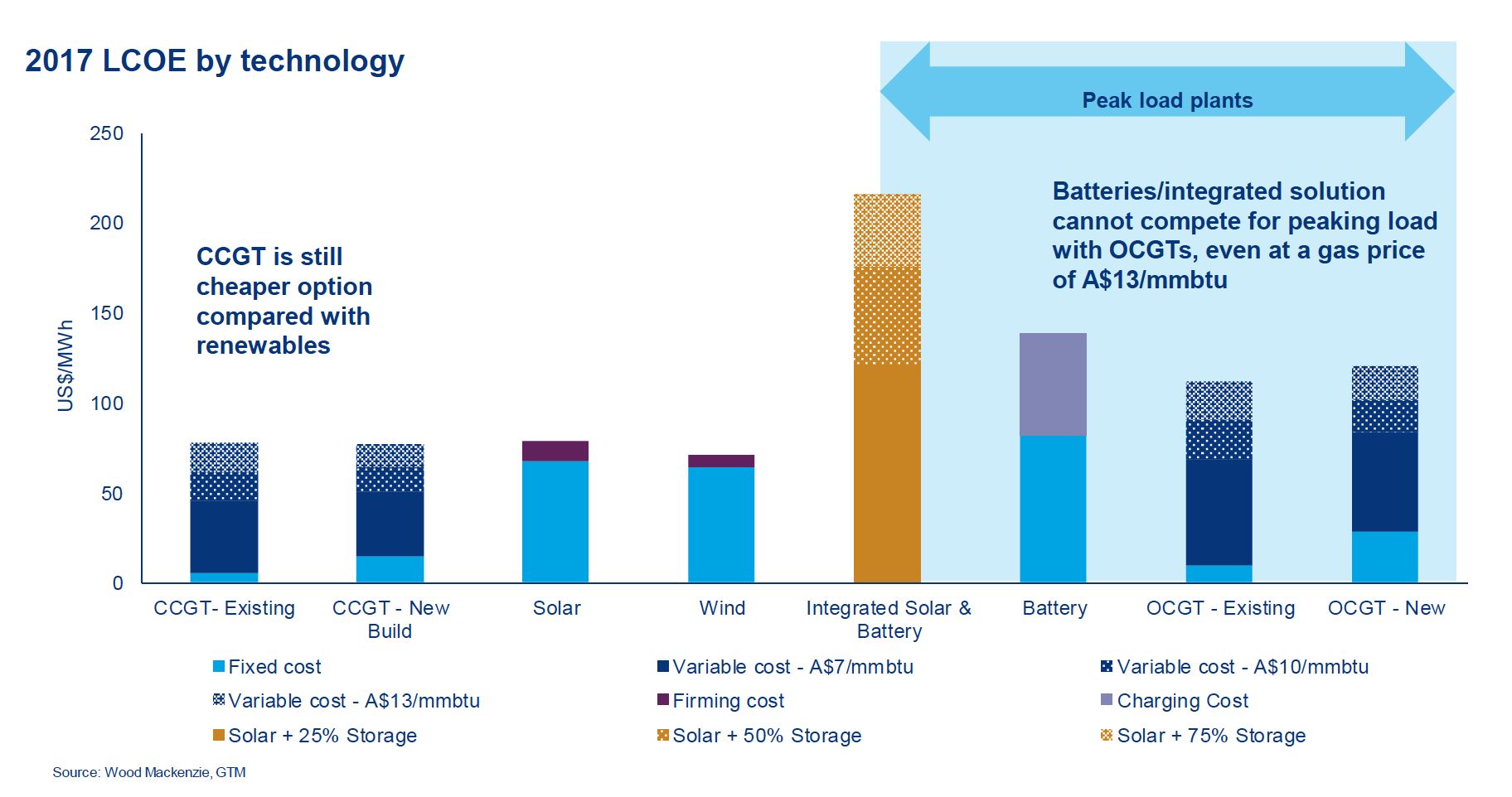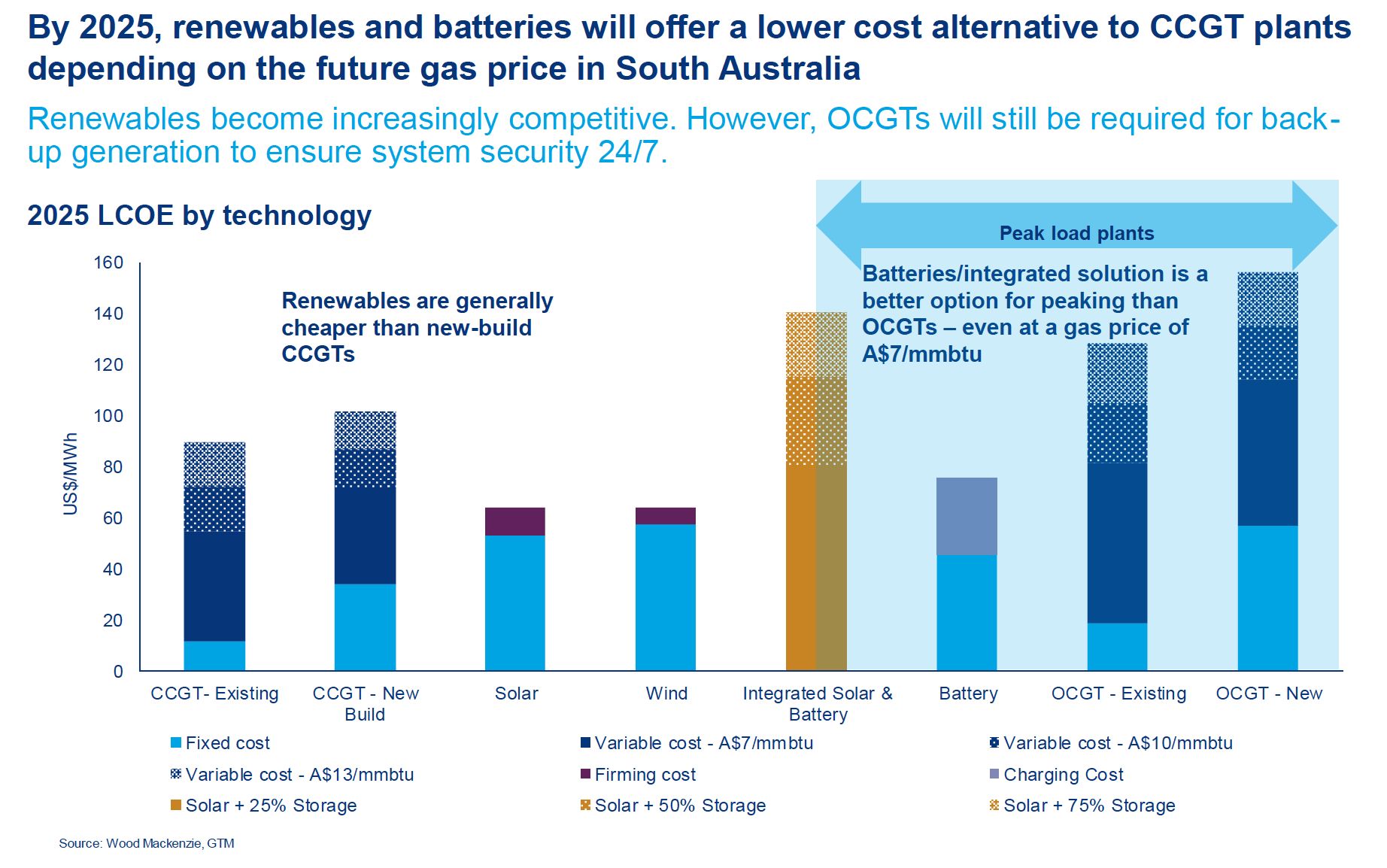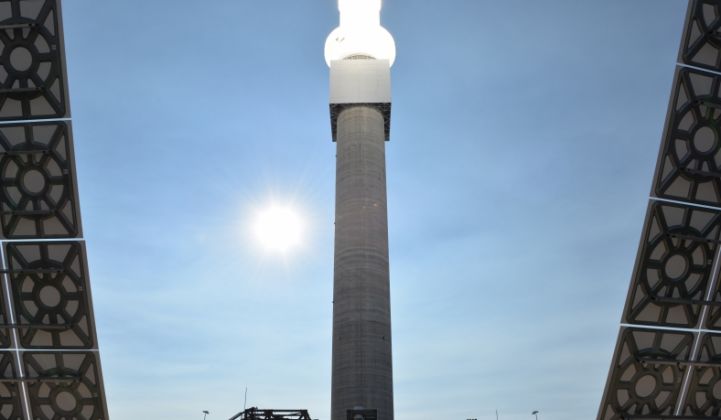SolarReserve, the California-based developer that bundles concentrating solar power towers, PV and molten-salt storage, won a contract to supply the South Australian government with dispatchable solar for between AUS 7.5 and 7.8 cents per kilowatt-hour.
That amounts to USD 6 cents per kilowatt-hour -- a price lower than SolarReserve's planned project in Copiapó, Chile, which was bid at USD 6.3 cents per kilowatt-hour earlier this year.
The Aurora project in South Australia features 8 hours of molten-salt storage; the Copiapó project in Chile features 13 hours of storage.
In the years since photovoltaics became the cheapest solar technology, concentrating solar power (CSP) developers have realized their projects probably can't compete without complementary storage.
As a result, they've moved to markets around the world with a very specific set of dispatchability needs: Australia, Chile, China and South Africa.
SolarReserve is targeting each of those markets. In Chile, for example, the company is looking to supply round-the-clock electricity to remote mining operations that are paying high prices for electricity.
South Australia, a state with large amounts of renewable energy and a fragile grid prone to blackouts, is also a prime candidate for CSP-plus-storage.
Reeling from a series of grid failures, South Australia is looking to increase its share of firm renewable energy supply. The government recently opened up bids to power its own operations, in an effort to procure 25 percent of its electricity from dispatchable renewables.
SolarReserve won the 20-year supply contract, according to a release from Premier Jay Weatherill's office.
The government has a peak load of 125 megawatts; the Aurora project's peak capacity is 150 megawatts. The project is expected to generate 495 gigawatt-hours of electricity per year, and supply 1,100 megawatt-hours of storage.
"The offer from SolarReserve was the lowest-cost option of the shortlisted bids, with the government paying no more than $78/MWh," wrote Weatherill's office in a release.
If SolarReserve can live up to the terms of the contract, the delivered price will be competitive with a new combined-cycle natural-gas plant in South Australia. GTM Research and Wood Mackenzie recently modeled out the economics of battery storage and renewables compared to natural gas, finding that gas is still the cheaper option today.
If operating in 2020 as planned and selling electricity to the government at USD 6 cents per kilowatt-hour, the Aurora plant would easily beat out battery storage -- as well as rival new and existing gas plants.

In 2025, SolarReserve's plant would handily beat combined-cycle gas plants. And it wouldn't be alone. By the middle of the next decade, renewables will likely be cheaper across the board for a variety of dispatchability needs in South Australia.

Despite grid management challenges, renewables are growing fast in South Australia. The state currently gets 46 percent of its electricity from renewables. According to Wood Mackenzie and GTM Research, the share of renewables on South Australia's grid could grow to 67 percent by 2025. Meanwhile fossil fuel plants there continue to shut down.
Consequently, there is a distinct need for storage in order to shift renewable generation to cover evening peaks, while also providing backup and black-start capabilities.
Tesla says it has both needs covered. The company recently won a contract for a 100-megawatt/129-megawatt-hour battery that will be paired with the 315-megawatt Hornsdale wind farm. When finished, it will be the largest lithium-ion battery in the world. (Although it should be noted that some are questioning the business case for the project.)
Tesla is pitching the project as an all-in-one solution for grid balancing: "Working in close collaboration with the South Australian government and Neoen, this grid-scale energy storage project is not only sustainable, but will help solve power shortages, reduce intermittencies, and manage summertime peak load to improve the reliability of South Australia's electrical infrastructure."
SolarReserve CEO Kevin Smith described his company's project similarly: "Aurora will provide much-needed capacity and firm energy delivery into the South Australian market to reduce price volatility."
The unique set of market conditions in South Australia -- a fragile grid, a strong desire to keep building wind and solar, and a new demand to meet peak load with dispatchable renewables -- makes the state very attractive for developers with some kind of storage solution.
If the Aurora project is executed as planned by SolarReserve, it will be one of the most economically competitive options.



